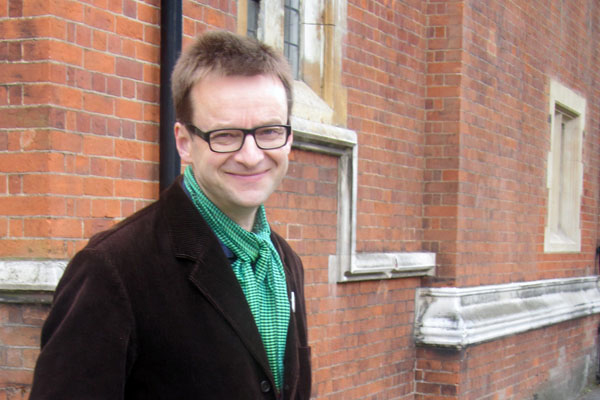A course correction for transportation thinking

Time spent commuting is usually considered time wasted. At least that’s how transportation planners think of it, and it stands true whether you’re stuck in bumper-to-bumper traffic, soaring through the skies toward a vacation destination, or walking to the train station and cramming shoulder to shoulder in a subway car as it zips across a city. Across the board, activities like these are typically thought of as an unproductive.
“But how do you measure what’s productive?” asked Tim Cresswell, a professor of history and international affairs at Northeastern University. “Time spent traveling is actually full of stuff—it’s full of thinking, it’s full of getting your head together for the working day, it’s full of productivity.”
Cresswell has dedicated much of the past decade to creating a new field called mobility theory, which takes into account new ways of understanding and examining movement. “I’m interested in the way the body moves, as well as the way we move in mechanically assisted ways, and in the way things move,” he explained.
With $1 million in funding from the Mobile Lives Forum, a research arm of the French rail company SNCF, Cresswell will build upon his creation of mobility theory. He and an international team of researchers, which will include post-doctoral fellows at Northeastern, will look to 14 countries across the globe as they ask what is working and what is not working in current transportation and migration strategies. They will also consider what’s being planned for the next 30 years.
The goal, Creswell said, is to rethink transportation as an arm of mobility theory, where movement paradigms such as walking and cycling are as important as highways and subways. Putting this mobility frame on transportation will allow for an expanded view of the latter but will also inform a larger global discussion around mobility in areas such as policy, health, security, sustainability, and social justice.
“Mobility theory refers to ways in which mobility is interconnected across scales,” Cresswell said. Transportation planners, migration theorists, demographers, health scientists, and performance artists are all interested in movement. “But they’re all separate,” he said. The new field aims to take these disparate ideas that are developed in silos and bring them together under the same roof and in the same texts.
The research team will begin with Canada and the United Kingdom by studying not only the national and local policies currently in place but also what social entrepreneurs and think tanks have in mind for the future.
They’ll also examine issues of environmental and social justice and subjects of contention. For instance, Cresswell will examine plans to add a second airport outside the city of Dakar, Senegal, which include a toll road. The development project is being touted as a boon for the city, as it will cut commute times from two hours to 30 minutes. But it will also eliminate the highly variable forms of transport used on current roads such as bicycles, animals, and foot traffic and will only be available to those who can afford a car. The question, Cresswell said, requires a deep examination of not just what is gained, but also what is lost through transport projects like this one.
Cresswell is a cultural geographer, and his work has focused on things like place, space, territory, and landscape. But as the world has become increasingly more connected and mobile, his interests have also shifted focus. “Mobility happens between and across and within places,” he said. “You have to think about them both together.”





